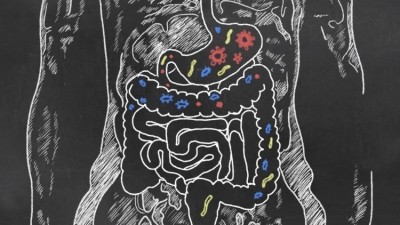CVD and IBD may be transmittable via the microbiota, scientist argues

That is the question posed by a Canadian scientist, who proposes that some NCDs could have a microbial component citing faecal microbiota transplant (FMT) findings to strengthen his argument.
“FMT from genetically predisposed or diet-induced obese animals to germ-free, lean animals causes significant weight gain, indicating that gut microbes are part of the etiology,” says Dr B. Brett Finlay, professor of microbiology and immunology at the University of Vancouver, Canada.
“Currently, microbial transmission of NCDs has only been demonstrated in controlled FMT experiments in genetically similar animal models with the same diets and environments.”
Dr Finlay cites obesity as a risk factor for many NCDs, discussing one idea that a socially transmissible component contributes to obesity, representing a shared environment, including diet and lifestyle, as well as microbiota.
However, he admits that it is difficult to uncouple environment (diet, social habits) from microbiota composition, because they are intimately connected.
Further discussions highlight obesity as the highest risk factor for type 2 diabetes (T2D), strengthening the idea that developing T2D may have a communicable component via the microbiota.
IBD and gut microbiota
Likewise, Dr Finlay believes Inflammatory Bowel Diseases (IBDs), which have been linked to dysbiotic microbiota, can be transferred from diseased humans or mice to healthy animals along with the disease phenotype.
“Spouses of IBD patients have similar dysbiotic microbiota compositions and a higher rate of disease than accounted for by chance alone, although, like most infectious diseases, the “transmission” rate is not 100%,” says Dr Finlay.
“In India, the rate of ulcerative colitis (UC) is low, yet after moving from India to the United Kingdom, United States, and Canada, migrants have higher levels of UC.”
Dr Finlay points to dysbiotic microbiota harvested from faeces, as a collective way in which connections between transmissible microbiota and NCDs be tested.
The article points out that FMT of dysbiotic microbiota from individuals with various NCDs into healthy animals results in conditions, such as Cardiovascular Disease (CVD), IBD, T2D, and many others.
CVDs such as heart attacks and strokes remain the most prevalent NCD across the world with strong links to the prevalence of gut microbiota that encode the enzyme choline trimethylamine (TMA)–lyase (CutC) that metabolises phosphocholine and carnitine (from red meat) into TMA.
TMA then undergoes oxidation into trimethylamine oxide (TMAO), of which its concentration in the blood remains a strong predictor of CVD, with higher prevalence of disease associated with the presence of CutC-encoding gut microbes.
Examine environmental only
However, Dr Finlay points out that studies looking into spousal or community rates of CVD have so far only examined environmental effects (e.g., smoking, obesity, and alcohol).
“These may alter the gut microbiota composition, and so further research is warranted to examine whether microbial transmission is also involved,” he adds.
In conclusion, the article notes that, transmissible microbiota, especially early in life, may also have a protective role against NCDs, including asthma, allergies, and obesity; these protective microbes can also be experimentally transmitted to animal models.
“Additionally, only gut bacteria have been considered in this discussion, yet viruses and fungi may also contribute to NCDs, as well as microbiota at other body sites such as the skin and oral cavity.
“As the potential role of transmissible microbiota in NCDs becomes better defined, it will provide new opportunities to address these complex diseases.”
Source: Science
Published online: DOI: 10.1126/science.aaz3834
“Are noncommunicable diseases communicable?”
Authors: B. B Finlay et al















